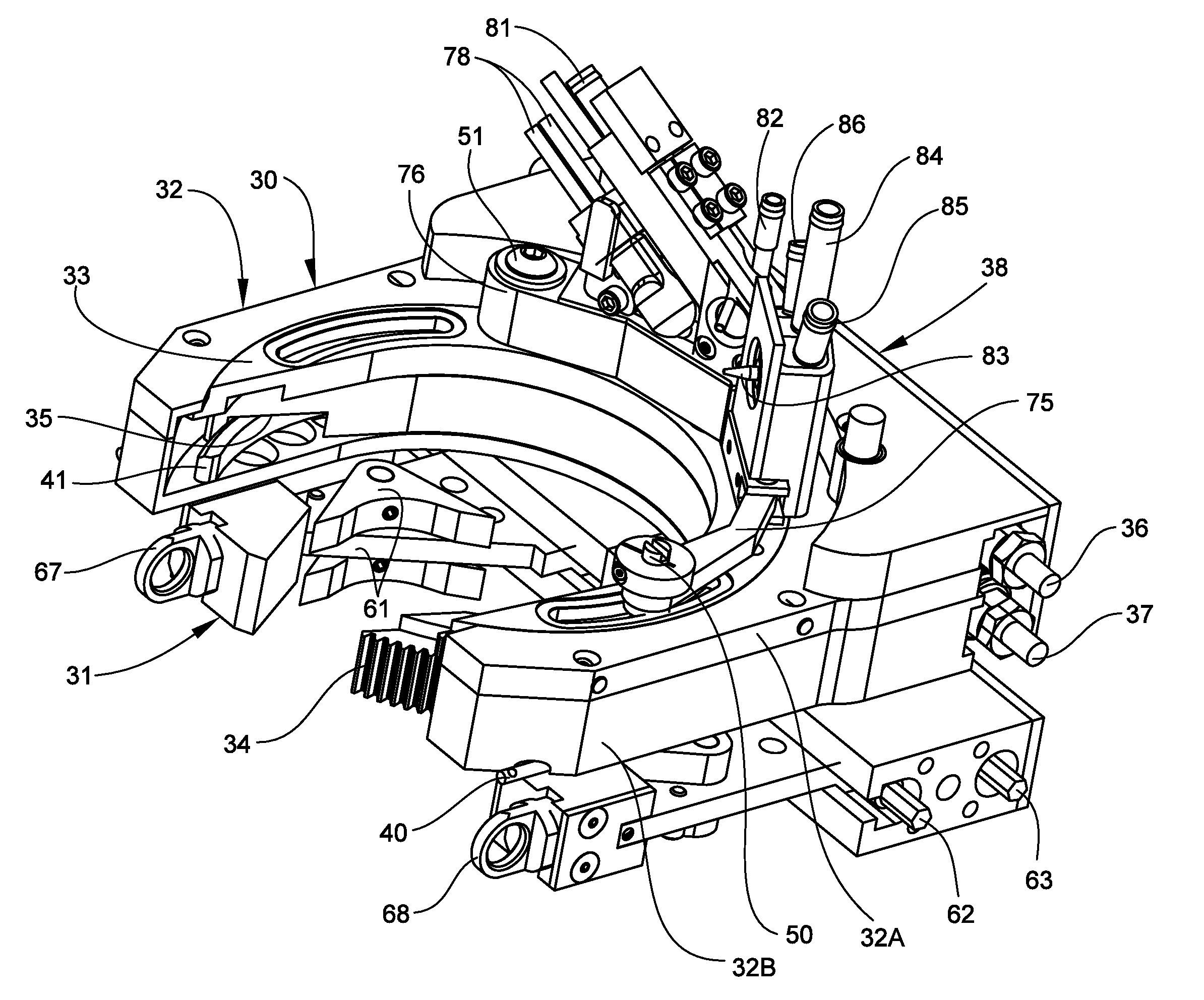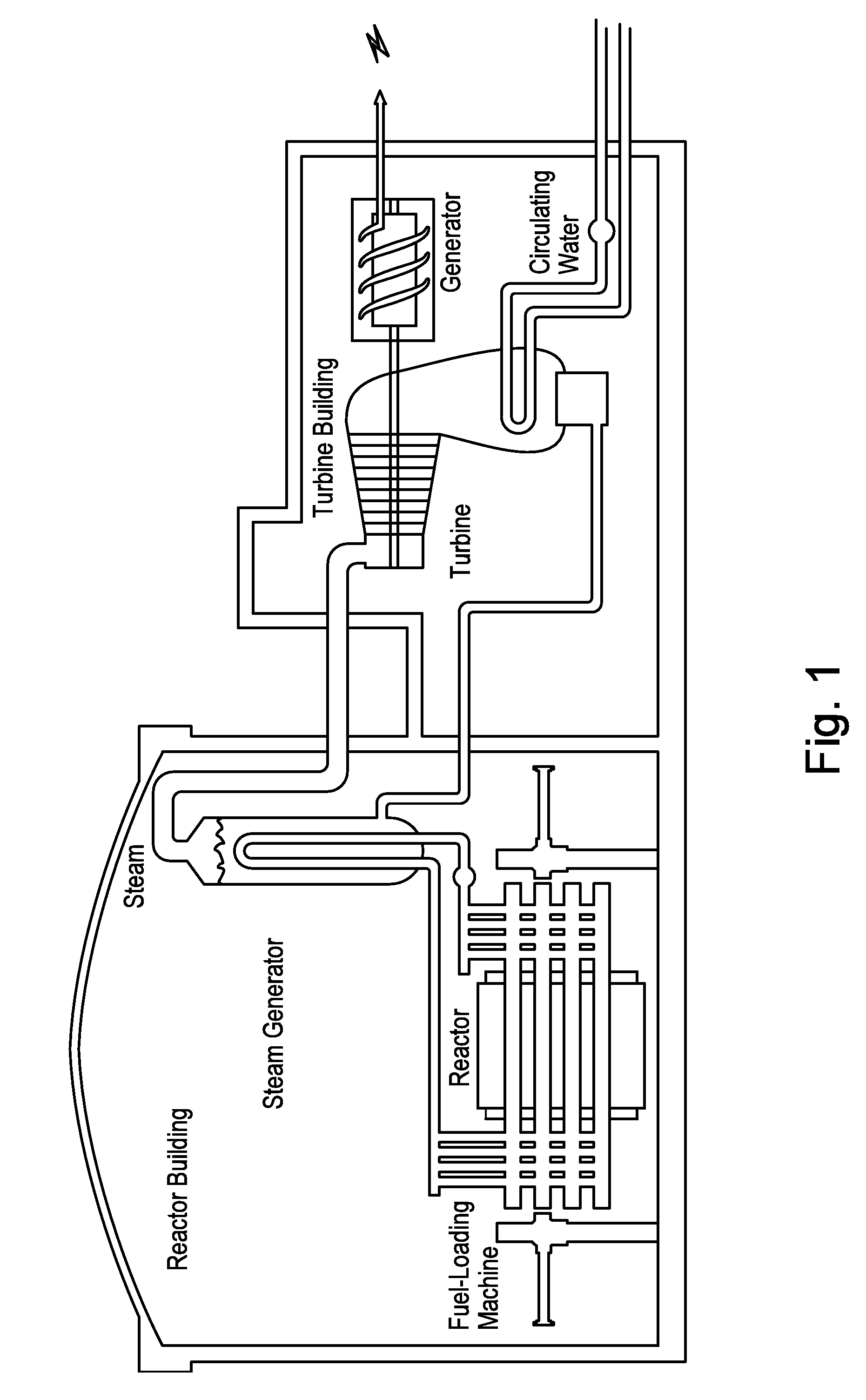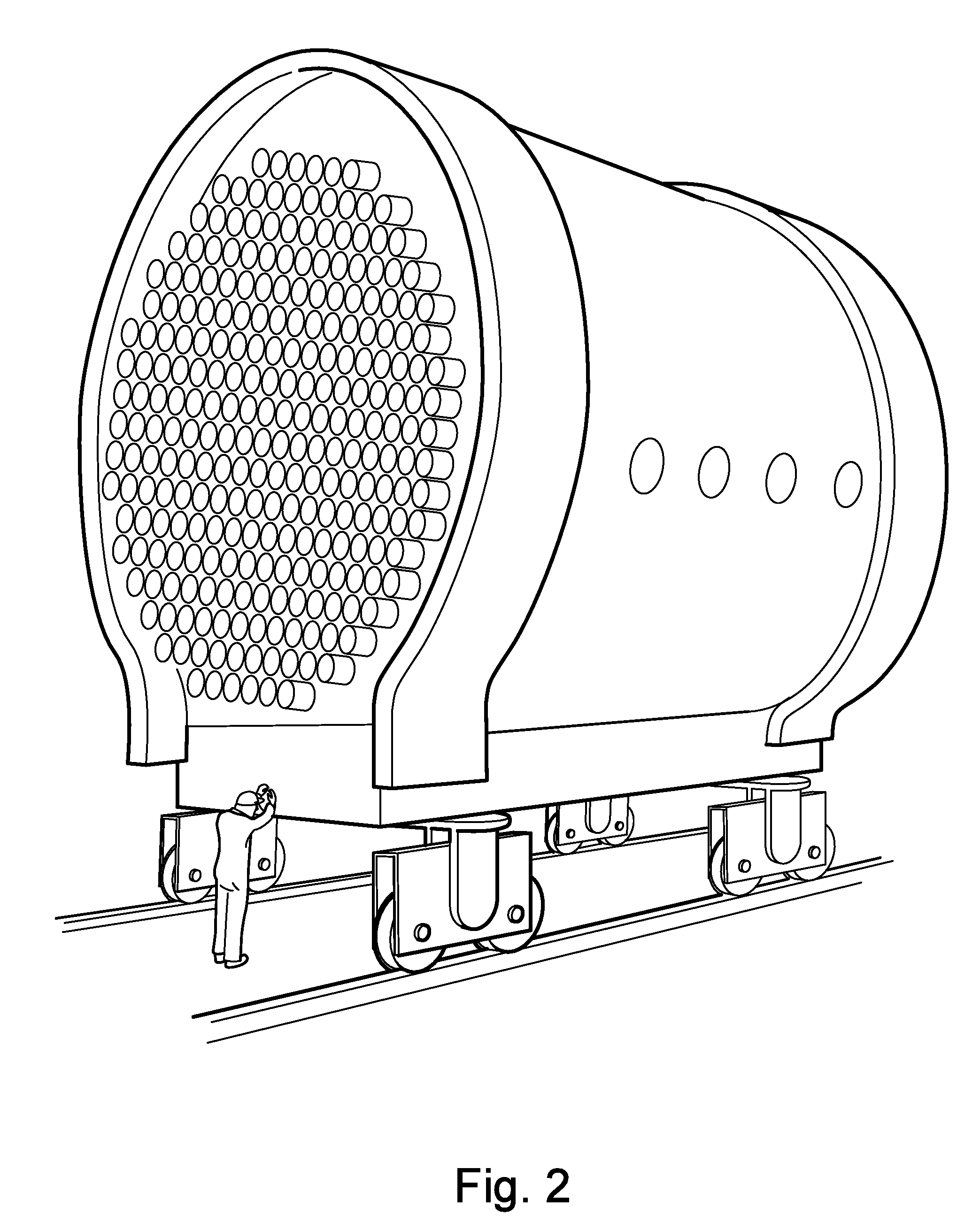Full function precision welding system
- Summary
- Abstract
- Description
- Claims
- Application Information
AI Technical Summary
Benefits of technology
Problems solved by technology
Method used
Image
Examples
Embodiment Construction
[0054]Referring now specifically to the drawings, a precision welding system according to a preferred embodiment of the invention is illustrated in FIG. 6 and indicated generally at reference numeral 10. The welding system 10 includes a motor housing 11, a weld head assembly 12 remote from the motor housing 11, and an insertion tube 13 interconnecting the weld head assembly and motor housing. Housing supports 14 and 16 are positioned on opposing ends of the motor housing 11 to allow the welding system 10 to rotate about a longitudinal axis. The supports 14 and 16 are rotatably attached to a platform 17 that allows the welding system 10 to move, in addition to rotating, in X, Y, and Z directions. As shown, the combination of the supports 14, 16 and platform 17 allow the weld head assembly 12 to be positioned for insertion into a confined space between pipes, for example feeder pipes 18 of a CANDU reactor. As illustrated in FIGS. 7 and 8, the weld head assembly 12 may be inserted betw...
PUM
| Property | Measurement | Unit |
|---|---|---|
| Distance | aaaaa | aaaaa |
| Circumference | aaaaa | aaaaa |
Abstract
Description
Claims
Application Information
 Login to View More
Login to View More - R&D
- Intellectual Property
- Life Sciences
- Materials
- Tech Scout
- Unparalleled Data Quality
- Higher Quality Content
- 60% Fewer Hallucinations
Browse by: Latest US Patents, China's latest patents, Technical Efficacy Thesaurus, Application Domain, Technology Topic, Popular Technical Reports.
© 2025 PatSnap. All rights reserved.Legal|Privacy policy|Modern Slavery Act Transparency Statement|Sitemap|About US| Contact US: help@patsnap.com



